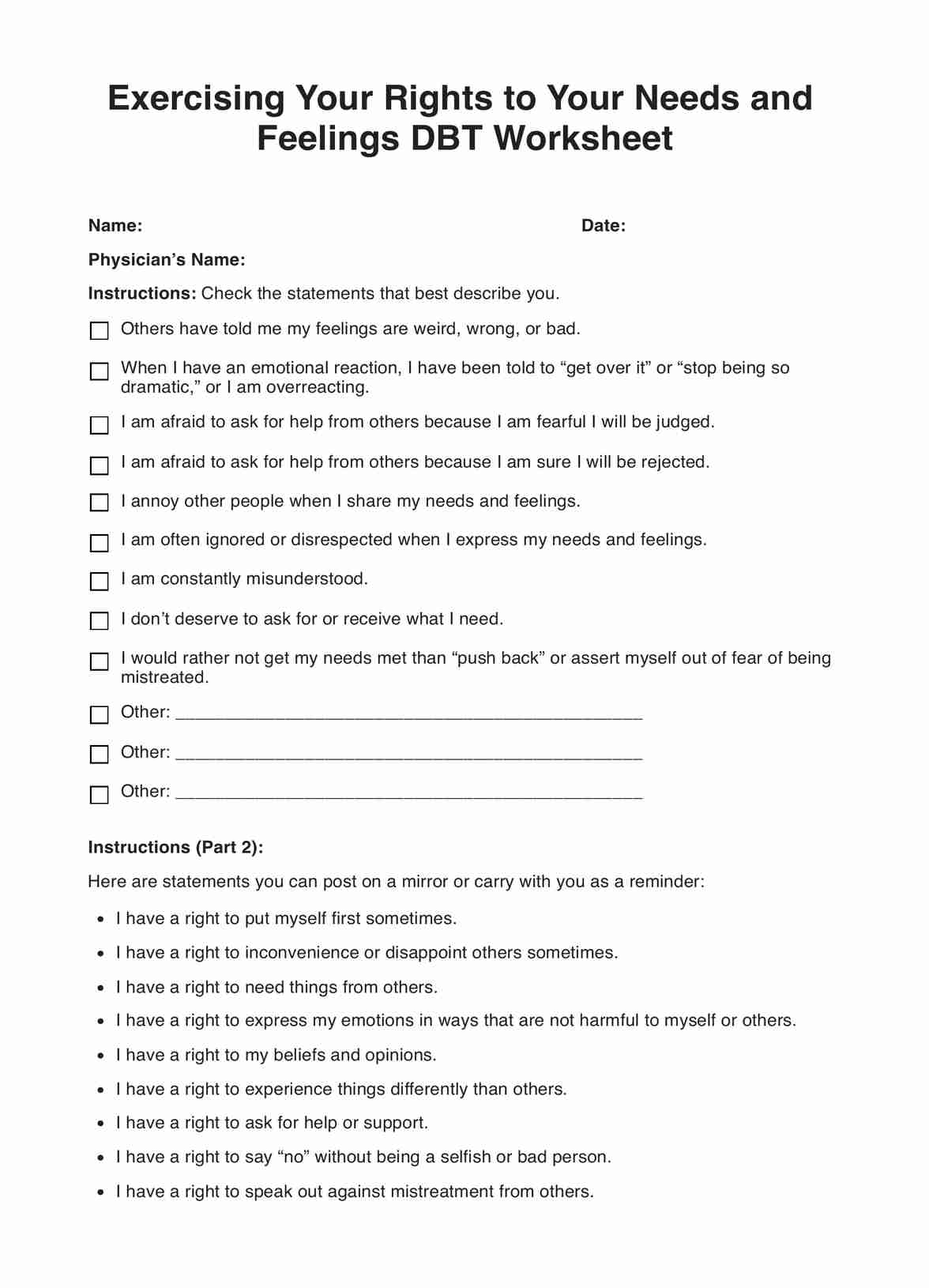A client usually takes 30 minutes to an hour to accomplish the Exercising Your Rights to Your Needs and Feelings DBT Worksheet.

Exercising Your Rights to Your Needs and Feelings DBT Worksheet
Give your client a copy of an Exercising Your Rights to Your Needs and Feelings DBT Worksheet to help them acknowledge and exercise their needs and feelings.
Exercising Your Rights to Your Needs and Feelings DBT Worksheet Template
Commonly asked questions
The Exercising Your Rights to Your Needs and Feelings DBT Worksheet can help a person learn how to acknowledge and exercise their feelings/needs Furthermore, the worksheet can help the client find people who will support them and teach them how to value themselves, especially what they are feeling and what they need.
It’s best used when the client is doubting themselves, when the practitioner has noticed that the client is belittling their feelings/needs, or when they need support during tough times.
EHR and practice management software
Get started for free
*No credit card required
Free
$0/usd
Unlimited clients
Telehealth
1GB of storage
Client portal text
Automated billing and online payments











